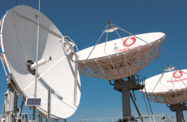The government has reiterated its commitment to speeding up the rollout of a national broadband network, in a bid to improve what is already some of the most developed telecommunications infrastructure on the continent. The information divide is still a concern, however, with country’s overall penetration rate still lagging behind some of its neighbours in terms of broadband access and price.
A recent report commissioned by Google said that net penetration rates in South Africa were low when compared to other leading economies on the continent, a result of a lack of access and infrastructure and the high cost of broadband. While the penetration rate has risen to around 17%, a total of 8.5m users, this was still well behind many other countries, the report said, citing Nigeria’s 29% penetration level, as well as those of Egypt, Morocco and Kenya, all of which were above South Africa.
According to Luke Mckend, the manager of Google South Africa, “It should also be borne in mind that access and cost remains the biggest obstacle to internet connectivity, particularly in less-developed areas.”
The planned new broadband network is central to South Africa’s attempts to reduce the cost and problems associated with internet access. Estimates by the Department of Communications put the cost of rolling out a nationwide broadband network and reducing connectivity costs between $7bn and $10.5bn. This figure makes up just a small part of the $118bn worth of infrastructure the government is seeking to develop in the next decade.
Karel Pienaar, the CEO of MTN, a mobile network operator, warning that the economy will suffer if broadband rollout is delayed. While attending a regional conference on information and communications technology (ICT) in early June, Pienaar said it was essential that South Africa have high-quality broadband infrastructure to allow the country to develop a knowledge-based economy.
“According to the World Bank, every 10% incremental broadband penetration will result in a 1.38% point GDP growth rate,” he said. “This is consistent with the assessment of the GSM Association that reaching a 20% wireless broadband penetration rate in South Africa by 2015 will generate $8.5bn incremental GDP and approximately 28,000 jobs in the ICT sector. Delays in the rollout of broadband could result in thousands of jobs not being created and a significant negative impact on GDP.”
South Africa has an extensive network of undersea cables that allow high-speed data transmission from major networking centres in Europe, Asia, the Americas and Africa. However, Aidan Baigrie, the head of business development at SEACOM, a regional ICT services firm, said the rate of transfer drops once the data comes ashore in South Africa.
“Whilst we have seen spectacular growth in submarine capacity over the past two years, this has not been the case downstream with the backhaul and last-mile infrastructure players,” Baigrie said on June 14. “As a result, there is a disconnect between the ample supply of affordable international connectivity to the shores, and the supply of affordable bandwidth to both rural and city-based end consumers inland.”
South Africa plans to reduce that discrepancy between real capacity and actual supply by 2020, when it intends to see at least 80% of its population have access to broadband. However, a key question that has yet to be answered is what model will be used to undertake this massive task. The government is still determining whether it will make Telkom, a land-line service provider, the lead agency or whether it will open up the programme to private developers.
Though Telkom is partly privatised, with the state currently holding a 39% stake, the government still wields significant control over the company. The government recently blocked a bid by South Korea-based KT Corporation to acquire 20% of the South African operator’s shares, saying the deal would compromise a strategic asset.
Currently, most broadband subscribers access their service through mobile phones, with almost half of the country’s internet activity conducted over handheld devices. However, this form of access is costly and beyond the reach of many lower-income earners. The government has proposed increasing competition in the market, with Dina Pule, the minister of communications, saying in early June that one step could be identifying and licensing internet service providers who would be capable of pushing broadband prices lower.
While this measure could help lower costs to consumers, sufficient infrastructure will still be needed to support an increasingly tech-savvy South African public.

